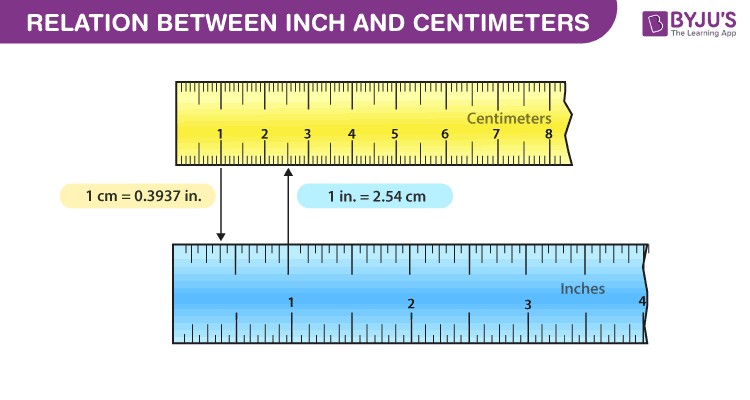Understanding the difference between centimeters (cm) and inches (in) is crucial for various tasks, from sewing to construction. This article clarifies the relationship between these two common units of length.
 Relation between inch and cm
Relation between inch and cm
The key takeaway is that one inch equals exactly 2.54 centimeters. This conversion factor allows you to easily switch between the two units.
Defining Inches and Centimeters
Inches belong to the Imperial system of measurement and are represented by the symbol ” or in. One inch can be further divided into fractions like half (1/2″), quarter (1/4″), eighth (1/8″), and sixteenth (1/16″).
Centimeters, part of the metric system, are represented by the symbol cm. One centimeter is equal to one-hundredth of a meter (0.01 m) or ten millimeters (10 mm).
Converting Between Inches and Centimeters
The fundamental relationship is: 1 inch = 2.54 cm.
To convert inches to centimeters, multiply the number of inches by 2.54:
Distance (cm) = Distance (in) x 2.54
For example, to convert 5 inches to centimeters:
5 in x 2.54 cm/in = 12.7 cm
Conversely, to convert centimeters to inches, divide the number of centimeters by 2.54:
Distance (in) = Distance (cm) / 2.54
For instance, to convert 10 cm to inches:
10 cm / 2.54 cm/in ≈ 3.94 in
Quick Conversion Table: Centimeters to Inches
| Centimeters (cm) | Inches (in) |
|---|---|
| 2.54 | 1 |
| 5.08 | 2 |
| 7.62 | 3 |
| 10.16 | 4 |
| 12.70 | 5 |
| 15.24 | 6 |
| 17.78 | 7 |
| 20.32 | 8 |
| 22.86 | 9 |
| 25.40 | 10 |
Practical Example: Height Conversion
Let’s say someone is 5 feet tall, which is equivalent to 60 inches. To determine their height in centimeters:
60 in x 2.54 cm/in = 152.4 cm
Therefore, a person who is 5 feet tall is 152.4 centimeters tall.
Conclusion
Remembering that 1 inch equals 2.54 centimeters allows for quick and accurate conversions between these two units. Whether you’re working on a DIY project or interpreting measurements from different sources, understanding this relationship is essential. Utilizing the conversion formulas ensures precise measurements and avoids potential errors.
